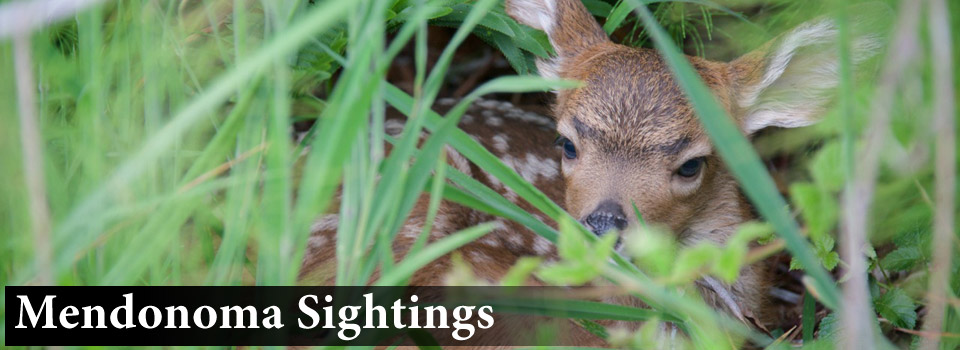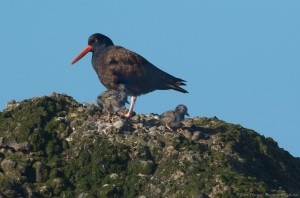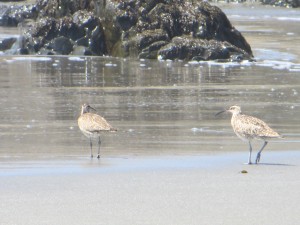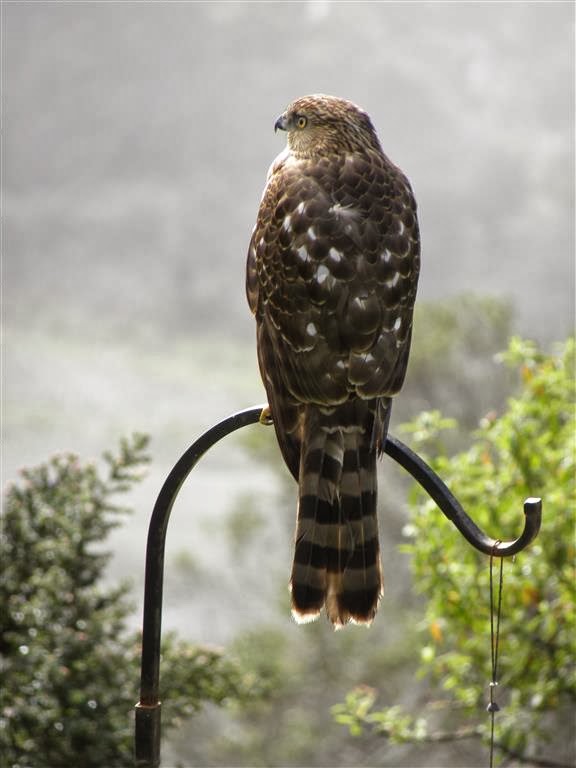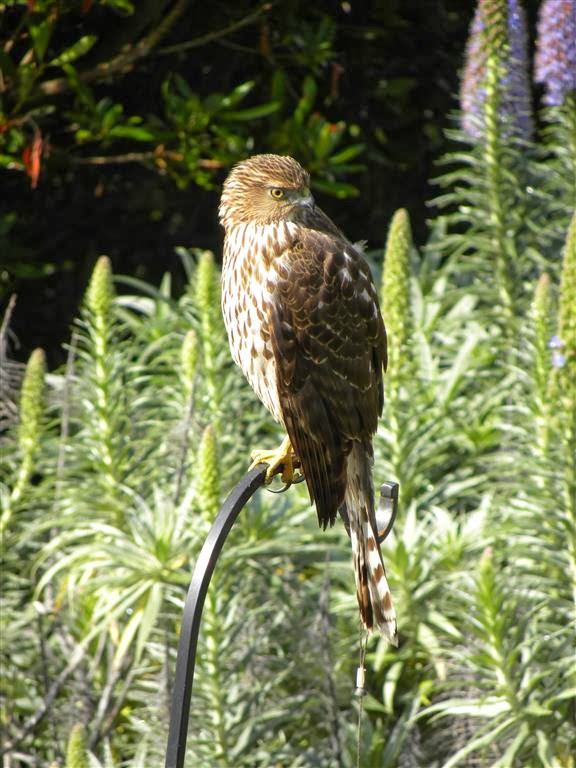Black Oystercatchers nest on the Mendonoma Coast. Robert Scarola recently photographed an Oystercatcher with two eggs.
These eggs have hatched and fledglings have appeared. Here's a photo by Craig Tooley of fledglings.
There are three chicks with this Black Oystercatcher. Can you spot them?
These birds are quite noisy, even when flying. To hear their call, here is a link to the Cornell Lab of Ornithology: http://www.allaboutbirds.org/guide/Black_oystercatcher/sounds
Thanks to Robert and Craig for allowing me to share their photos with you here. To see much more of Craig's nature photography, here is his website: www.ruffimage.com
